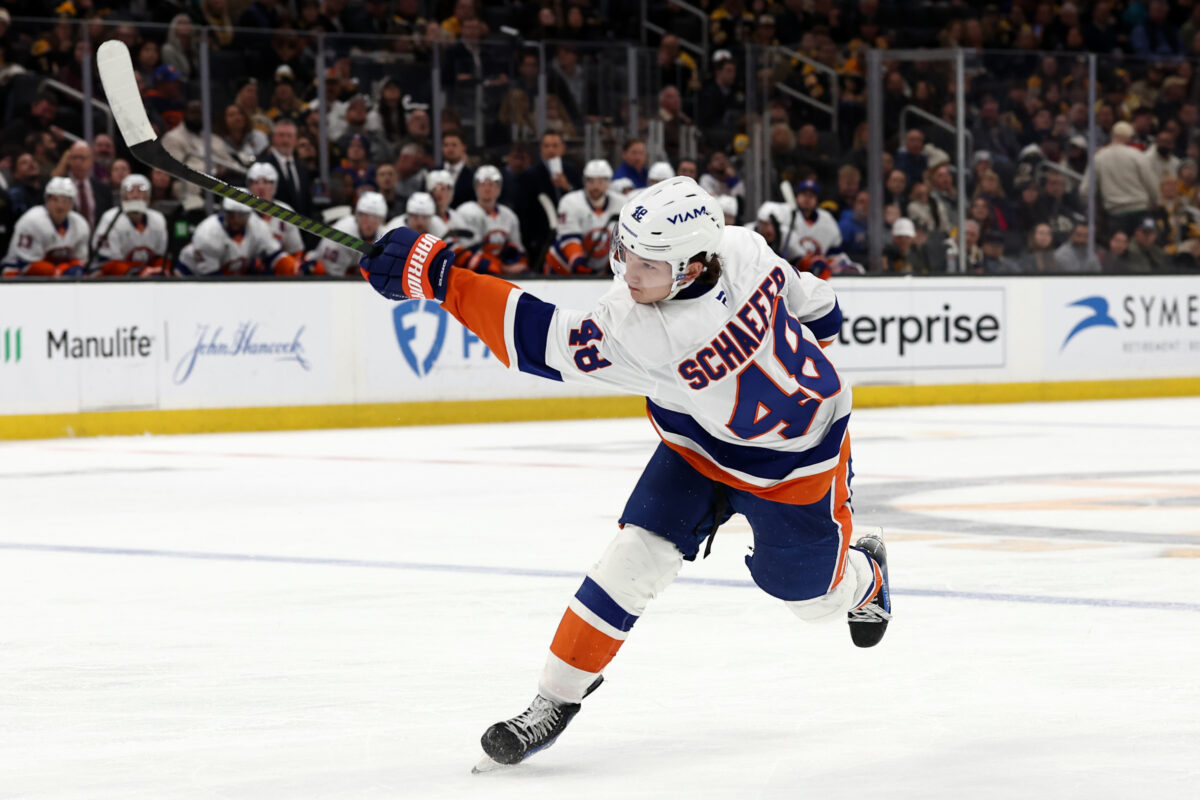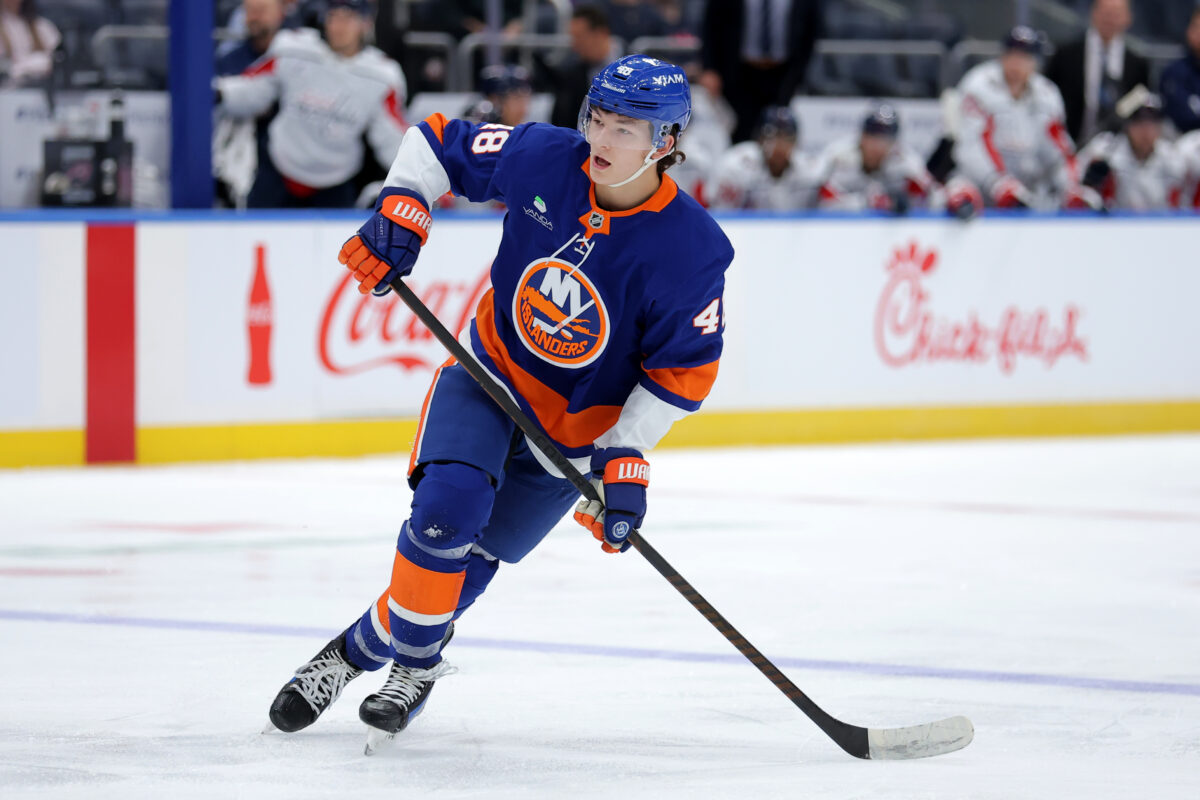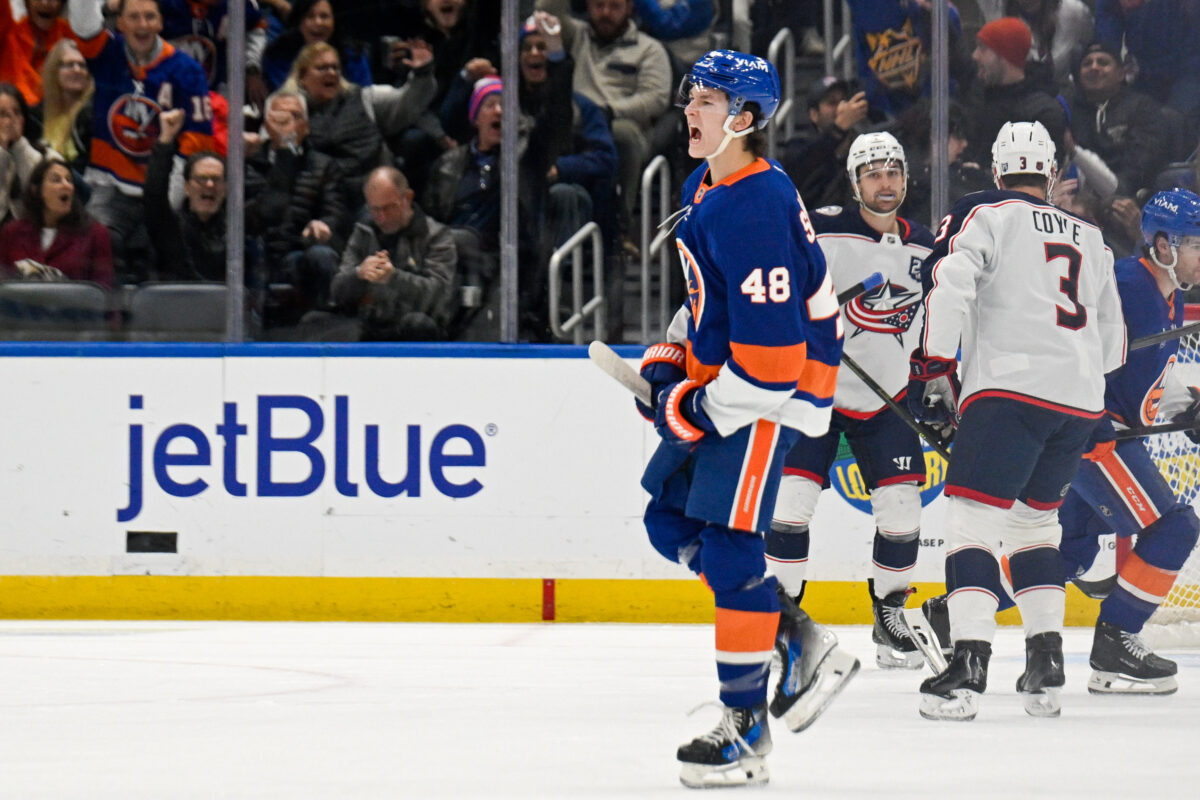When the New York Islanders selected Matthew Schaefer first overall in June, the organization wasn’t just looking for a prospect; they were looking for a savior for their blue line. We often preach patience with 18-year-old defensemen. The conventional wisdom says the jump from junior hockey to the NHL is too steep, the forwards are too fast, and the defensive schemes are too complex for a teenager to master immediately.
We are now at the quarter-mark of the 2025-26 season, and Matthew Schaefer has effectively thrown conventional wisdom out the window.
The former Erie Otters star, fresh off a gold medal performance at the Hlinka Gretzky Cup, hasn’t just adapted to the professional game — he is dictating it. For an Islanders team navigating significant injuries and a competitive Metropolitan Division, Schaefer hasn’t just been a bright spot; he has been their most essential engine.
Heavy Minutes, Heavy Responsibility
The most telling statistic regarding Schaefer isn’t his point total, though we will get to that. It is his workload. In the modern NHL, coaches rarely trust teenagers with defensive responsibility. Yet, Schaefer is averaging 23:06 of ice time per game.
To put that into perspective, he isn’t just leading all rookies in this category; he is lapping the field. He is averaging over three minutes more per night than the next closest rookie, Alexander Nikishin.

We are witnessing a usage rate that borders on historic. Schaefer recently became the youngest player since time-on-ice started being officially recorded to play at least 27 minutes on consecutive days. The last player to approach that kind of durability and trust at such a young age was Jay Bouwmeester back in 2003.
This isn’t “sheltered” ice time. Schaefer isn’t being hidden on the third pair against fourth-line grinders. He is playing in all situations, anchoring the blue line against opposing top-six forwards.
Stabilizing the Back End
The timing of Schaefer’s emergence has been critical. With Alexander Romanov sidelined likely for the remainder of the season due to a shoulder injury, the Islanders faced a potential crisis on defense. Instead of collapsing, the defensive structure has found a new focal point.
Head coach Patrick Roy, never one to hand out praise lightly, recently highlighted Schaefer’s ability to impact the game on both ends. Roy noted that Schaefer is “in on the rush all the time,” while simultaneously “defending well.”
Related – Projected Lineups for Bruins vs Islanders – 11/26/25
The eye test backs this up, but the possession metrics paint an even starker picture. When Schaefer is on the ice, the ice tilts in New York’s favor. In a recent contest against the St. Louis Blues, the numbers were staggering:
- The Islanders out-attempted St. Louis 25-9 at even strength with Schaefer deployed.
- They outshot the Blues 19-6 during 5-on-5 play with him on the ice.
These are not the numbers of a passenger; they are the numbers of a driver. He is also engaging physically, recording six blocks and ten shots over a recent five-game span, proving he isn’t afraid to play in the dirty areas of the ice.
The Offensive Spark
While his defensive transition has been seamless, Schaefer’s offensive production has provided a much-needed jolt to the Islanders’ attack. Through roughly the first quarter of the season, he has posted 16 points.

He sits third among all rookies in points and is tied for the lead in goals with seven. His four power-play markers suggest he has quickly solved NHL goaltending from the point, a skill that often takes defensemen years to refine.
A One-Horse Race for the Calder
At this juncture, the race for the Calder Trophy — awarded to the NHL’s top rookie — appears to be over before it truly began. Schaefer is currently the runaway favorite.
In a recent poll of 16 NHL.com writers, the results were unanimous. Using a weighted voting system, Schaefer received every single first-place vote, totaling 80 points. The runner-up, Montreal Canadiens’ Ivan Demidov, sat a distant second with 57 points, followed by the Anaheim Ducks’ Beckett Sennecke.
While there is plenty of hockey left to be played, it is difficult to imagine a scenario where another rookie catches Schaefer, barring injury. The gap in usage and impact is simply too wide.
Chasing Bobby Orr?
The more interesting conversation is shifting away from “Is he the best rookie?” to “Is he one of the best defensemen in the league, period?”
According to USA Today, Schaefer has already cracked the top five in the Norris Trophy race. Being mentioned in the same breath as perennial contenders like Cale Makar, Quinn Hughes, Josh Morrissey, and Miro Heiskanen this early in a career is almost unheard of.
Related – How Calum Ritchie Earned the Islanders’ Confidence
This brings up a tantalizing historical possibility. No player in NHL history has ever won the Calder Trophy and the Norris Trophy in the same season. The closest was Bobby Orr in 1966-67, who won the rookie award but only managed a nomination for the best defenseman honors.

If the Islanders secure a playoff spot and Schaefer continues to produce at a clip that rivals Makar or Hughes, he could theoretically achieve what even No. 4 could not.
The International Question
Given his dominance, the question of international duty has surfaced. General manager Mathieu Darche has confirmed what most of us already suspected: Schaefer will not be loaned to Canada for the World Junior Championship. He is simply too valuable to the NHL club to release for a junior tournament.
However, a bigger stage looms. Schaefer has been added to Canada’s drug testing protocol for the upcoming Olympics in Milan. This administrative move is a clear signal that he is on the shortlist for the roster.
If he makes the trip to Italy in February, he would become the first active NHL player of his age to make an Olympic roster. It would be a fitting capstone to a rookie season that is rapidly redefining what we expect from an 18-year-old defenseman.
AI tools were used to support the creation or distribution of this content, however, it has been carefully edited and fact-checked by a member of The Hockey Writers editorial team. For more information on our use of AI, please visit our Editorial Standards page.
